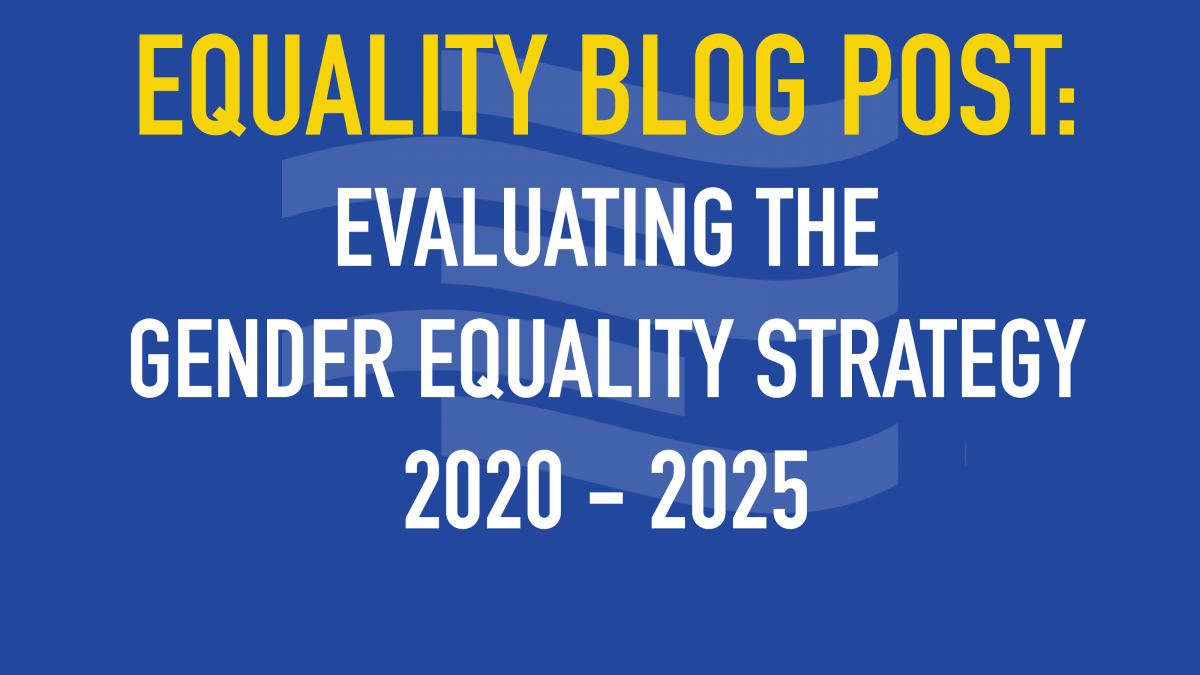Will actions finally speak louder than words in a Union of Equality?
Evaluating the Gender Equality Strategy 2020-2025
By Julia Konowrocka, Policy & Communication Assistant at Equinet
Three weeks ago, the European Commission released a Gender Equality Strategy, presented by the first ever Commissioner for Equality, Helena Dalli. This publication is an important step for several stakeholders. The European Commission, for acknowledging the importance of gender equality and dedicating a fully-fledged strategy to it, and civil society, NGOs, NPOs, IOs and women’s movements who have pushed hard for such a crucial political document to be drafted.
At first sight, the Gender Equality Strategy 2020 – 2025 provides a comprehensive overview of the many interrelated issues contributing to gender inequalities and discrimination facing our societies today. The document successfully builds upon the previously established five key areas of the Strategic Engagement for Gender Equality (2016 – 2019), while including several new and crucial topics in an attempt to further position the EU as a global leader on gender equality. But with the rapid development of new EU policies and evolving discrimination themes, will the Strategy keep up with the latest developments in the field of gender equality? And if so, will EU leaders achieve the goals set out in the strategy based on the tools it provides?
Equality Bodies are mandated to tackle all the identified issues and stand ready to provide guidance and expertise. The Strategy itself concludes that gender equality is a joint responsibility requiring the commitment and engagement of all EU institutions, agencies, Member States and partners. It is thus a disappointment that key partners like equality bodies are not explicitly mentioned in the Strategy. The Gender Equality Strategy provided a good opportunity to meaningfully involve equality bodies in several initiatives such as the EU Taskforce for Equality, the EU network on prevention of Gender-Based Violence, the Victims’ Rights Strategy or capacity-building of professionals on access to justice regarding sexual and reproductive health and rights.
Let us begin with the first question. Gender mainstreaming and intersectionality are guiding principles of Equinet’s previously published policy brief on the future Gender Equality Strategy. The strategy does a good job of tackling gender inequalities from an economic, societal and even political perspective. New areas, such as the gender equality implications of Artificial Intelligence are also present in the document. On the other hand however, when it comes to intersectionality, aside from referencing that it is a “cross-cutting” principle, the document provides no further steps. Intersectionality should effectively take into account the discrimination suffered by women on intersecting grounds such as socio-economic status. In other words, multiple identities may lead to multiple discrimination. Take for example a Muslim woman who aside from her gender may also be discriminated on the ground of religion, or a lesbian woman with hearing impairment who is at risk of discrimination on the ground of sexuality, gender and disability all at once. In fact, these specific needs and challenges faced by women discriminated on more than one ground are not even mentioned in the Strategy. Intersectionality is under-reported and requires strategic approaches in order to build a shared understanding of the concept. In this sense, Equinet, based on its invaluable expertise from National Equality Bodies, could assist the EU by providing research, data and practical input from Member States in order to best approach intersectionality and understand the issues faced by women belonging to groups particularly at risk of discrimination.
Coming to the second question, the strategy falls short on a few occasions. For starters, gender inequalities cannot be tackled effectively if we lack information on those. While the Strategy identifies data gathering as an important aspect and names important partners like EIGE for research, it lacks any mention to national data, which National Equality Bodies could provide in a systematic way. Additionally, if gender-based violence is to be tackled successfully, proper access to legal aid and effective training of relevant actors, including civil servants and school teachers, needs to be provided. Especially in the aftermath of the #MeToo movement, which shed light on the issue of sexual harassment, it was expected that the Strategy would have elaborated this area further. The mention of the Work-Life Balance Directive is welcomed, but it could have stressed the importance of tackling pregnancy and parenthood discrimination. The question that follows this lacuna is how are we to achieve an equal share of care responsibilities, if we do not make a clear link to fighting gender stereotypes and teach our society first, that both women and men belong in the workplace just as they both belong at home with their children?
Importantly, through the Gender Equality strategy the European Commission should put money where its mouth is and ensure that all its commitments and initiatives mentioned in the Strategy are financial backed by adequate resources allocated in the still under development Multiannual Financial Framework (2021-2027). While the Strategy mentions the inclusion of a gender dimension “in various EU funding and budgetary guarantee instruments“, in order to be consistent with its own insistence on gender mainstreaming, the Strategy should have proposed the application of gender budgeting to all of the draft MFF.
So, can we expect actions to speak louder than words this time? The Gender Equality Strategy is the first step in that direction, but it must be implemented in a way that also addresses the above-mentioned issues. Equality Bodies are expert institutions for implementing gender equality laws and policies. They stand ready to support the European Commission in tackling all aspects of gender discrimination and inequality.
To read the full Gender Equality Strategy click this link.
The views on this blog are always the authors’ and they do not necessarily reflect Equinet’s position.

